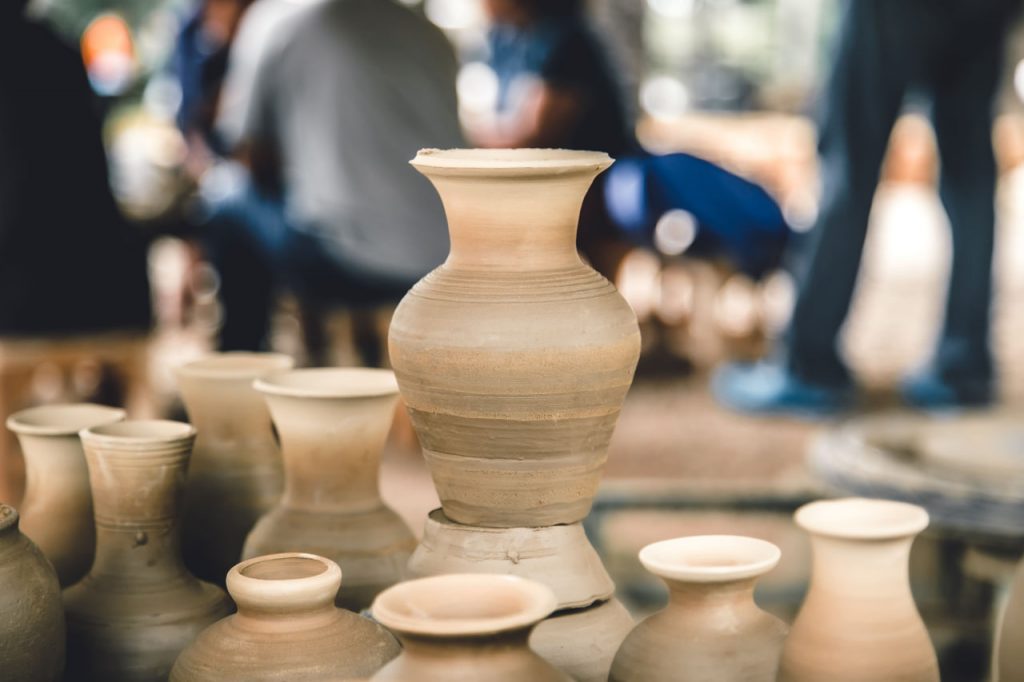Wheel throwing is often considered the cornerstone of pottery, allowing artists to create beautifully symmetrical and refined forms. From bowls and mugs to vases and intricate sculptures, this technique can bring your creative ideas to life. Whether you’re a beginner or an experienced potter looking to refine your skills, wheel throwing offers endless possibilities for artistic expression and craftsmanship.
At the heart of wheel throwing lies the potter’s wheel, which rotates the clay, allowing you to mold it into different shapes with your hands. The wheel’s spinning motion harnesses centrifugal force, which helps to create smooth, even pieces. Mastering the wheel requires patience, focus, and a deep understanding of the clay’s behavior, but once you get the hang of it, the results can be incredibly rewarding.
Key Elements to Master in Wheel Throwing
- Centering the Clay: The very first and most crucial step in wheel throwing is centering the clay on the wheel. If the clay is not centered properly, the resulting piece will be uneven, lopsided, or possibly collapse. This step involves pressing the clay firmly while the wheel spins, ensuring that it forms a perfect mound. The key is to maintain consistent pressure and allow the wheel to help you find the right symmetry. It’s a step that takes time to master, but once you do, you’ll notice a significant difference in the quality of your work.
- Shaping Your Clay: Once the clay is centered, you can start shaping it into your desired form. The art of shaping requires a combination of finesse, patience, and practice. As you apply pressure with your fingers or tools, you’ll feel the clay start to respond. The wheel’s spinning motion makes it easier to shape and create symmetry, but you’ll need to constantly adjust the speed of the wheel to maintain control and precision. It’s important to understand that, like any form of art, shaping clay is not a linear process. There will be moments of trial and error, but these will help you develop your unique style and improve your technique over time.
- Forming the Base and Walls: As you shape your clay, the base and the walls are formed by controlling the amount of pressure you apply. When creating bowls, pots, or other vessels, the base is the foundation of your piece, and the walls are shaped according to the desired proportions. It’s essential to keep the thickness consistent throughout, avoiding areas that are too thick or too thin. An uneven base or walls can make the piece weak or unbalanced, which will affect its overall functionality and aesthetics.
- Trimming and Refining the Piece: After the piece has dried to a leather-hard state, you’ll need to trim away excess clay and refine the shape. This process involves using a trimming tool to smooth out rough edges, shape the base, and perfect the symmetry. The trimming process is an essential part of pottery, as it ensures that your piece will not only look beautiful but also be structurally sound.
Advanced Techniques and Creativity in Wheel Throwing
As you progress in your wheel throwing skills, you’ll start to experiment with different techniques to add more intricate details to your pottery. This could involve using decorative tools, adding textures, or playing with various surface finishes. For example, you can use carving, stamping, or slip-trailing to create patterns and designs on your pottery. The beauty of wheel throwing lies in its versatility, as the process allows for endless possibilities of creativity.
Throwing Larger Pieces: One of the more advanced skills is learning to throw larger pieces of pottery. Creating large pots or sculptures requires a different technique than smaller pieces. For example, you might need to throw in stages, allowing the clay to firm up before adding more height to the piece. You also need to consider the added weight and gravity when working with larger amounts of clay. By gradually building your skill set, you’ll learn how to control larger pieces of clay and make them as finely crafted as smaller ones.
Experimenting with Different Clay Bodies: Pottery is an incredibly versatile art form, and experimenting with different types of clay can add unique qualities to your work. For example, stoneware, earthenware, and porcelain all have different textures, colors, and firing temperatures. Each clay body responds differently to the wheel, allowing for an array of unique effects and finishes in your work.
The Importance of Practice and Patience
While wheel throwing is a technical skill, it’s also an art form that relies heavily on intuition and personal expression. It’s about learning to work with the material, understanding its limitations, and pushing the boundaries of your creativity. With regular practice, you will begin to develop your own signature style and be able to tackle more complex projects with confidence.
Remember, the road to mastering wheel throwing is filled with trial and error, but every mistake is a learning opportunity. Whether you’re making a simple bowl or a more intricate sculpture, the process of working with clay is as valuable as the final piece itself. The more you practice, the better your control and creativity will become.
The Joy of Pottery: Beyond Technique
Ultimately, wheel throwing is not just about the technical aspects of pottery. It’s about the experience of working with your hands, feeling the clay, and creating something beautiful from raw materials. It’s a deeply meditative practice that can bring both joy and frustration, but the end result is always worth the effort.
Whether you’re creating functional pottery pieces for everyday use or designing one-of-a-kind art pieces, wheel throwing offers an exciting way to express yourself through clay. With the right mindset, dedication, and a bit of practice, you’ll be able to create pottery that is not only functional but also a true expression of your artistic vision.

